Here we are. This is it; the culmination of six months of playing every single Metroid game from start to finish and reviewing them for your enjoyment. The Road To Metroid Dread has reached its end. Was it worth it? I hope so, so let’s find out in this completely spoiler-free review.
Well, if ever there was a game that condensed over 35 years of the Metroid series in a tidy package, Dread would be it. We’re so used to Super Metroid being the standard-bearer for this franchise, we don’t realise how much that has been a crutch for the series as a whole. It’s true; after playing all of these games in such close proximity to one another, I’ve realised that each game following the Super Nintendo classic has borrowed so much to the point of plagiarism, trying to ape that game but never managing to distil and repeat what made it so great and so legendary in the first place. But play through Metroid Dread, and you start to realise where all of these games went so wrong in trying to capture Metroid III’s lightning in a bottle.
Because I feel this is the first game to truly understand why Super Metroid is still so revered and delivers a parable experience without dumbing down that 16-bit release, or even trying to mimic it by slapping the player with nostalgic sights and sounds. Dread is the first Metroid game in some time that’s not trying to be a new Super Metroid. What’s more; Dread somehow ties together the main non-Prime timeline together in a nice little bow, answering many unanswered questions while thankfully leaving some mysteries untouched.
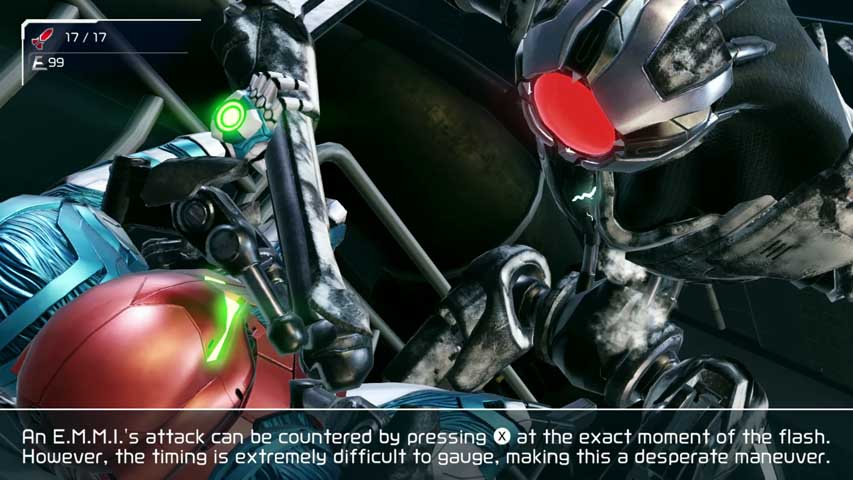
Metroid Dread Nintendo Switch Review
Following on from Metroid Fusion; the X parasite that caused Samus so much trouble in that game and was thought to have been completely eradicated after the destruction of the BSL research station appears to have survived on the planet of ZDR. The Galactic Federation, fearing the worst, dispatch seven mechanical scouts known as Extraplanetary Multiform Mobile Identifiers (EMMI for short) to confirm the parasite’s reappearance but are lost soon after. As the only person invulnerable to the X parasite’s infectious nature, Samus is sent to investigate the whereabouts of the X parasite, who sent the video evidence and what happened to the crew of EMMI.
However, her arrival on ZDR is fraught with danger from the get-go. A Chozo warrior attacks our hero, knocks her unconscious, drags her deep underground and inflicts a so-called physical amnesia upon Samus that removes most of her abilities. With this new adversary proving to be powerful and dangerous, Adam, her ship’s AI; provides a simple mission – Reach the surface where Samus’ ship is parked, and escape from this deadly environment. As always, the mission becomes much more complex over the course of the game, as the EMMI have been reprogrammed to become intensely aggressive towards Samus – To the point where they start to stalk her. These intimidating foes are practically indestructible and relentless; if you thought Metroid Fusion’s SA-X was terrifying, well get ready to meet the series’ equivalent of the Terminator.
Which is a good time to introduce Dread’s main addition; so-called EMMI zones where each of these seven technological terrors resides. Enter one for the first time and one of these dreaded devices is alerted to your presence. Each one is gifted with deadly abilities and the ability to detect Samus’ location through sound, and if they see her they immediately give chase. And should they catch up to you and grab you, well – There’s a limited window to escape their grasp by pressing the X button at the right time, but more often than not, it’s an instant game over. Unfortunately, these EMMI zones are usually right in the middle of where you need to go next, so some real stealth skills are required in order to sneak past and carry on with your mission. If you can find their Central Unit, destroy it and absorb its power; you’ll temporarily unlock the Omega Cannon – The only thing that can destroy an EMMI. Not that you’ll be safe even with this powerful beam; you’ll still need to fire the Omega Cannon’s machine-gun-like Stream to melt the EMMI’s faceplate, revealing the robot’s weak point. Then, you’ll have to charge the Omega Blaster for enough time to fire an incredibly powerful shot at its head. It feels like a lifetime to charge up the Blaster while an EMMI is bearing down on you, and even when it’s charged – You’ll need to accurately aim for the head and make that shot count. If there’s one thing you’re going to see a lot, it’s the EMMI grabbing Samus and thrusting a spike into her before cutting to the Game Over screen. It never stops being terrifying. However, you are amply rewarded for overcoming these mechanical menaces.
You’d think that having so little room for error becomes an annoyance, but honestly, I found it thrilling to play a Metroid game with such a challenge. Once you pick up a few useful abilities and learn how to deal with EMMIs, these segments become a thrilling game of cat and mouse, and something that adds depth to the three and a half decades old Metroid formula. Much like Samus Returns, generous checkpoints ensure that death is a punishment, not a chore; while the fun of outrunning a relentless foe gives you that feeling of wanting just one more go. But these segments are merely a small piece of Dread; what of the rest of the game?
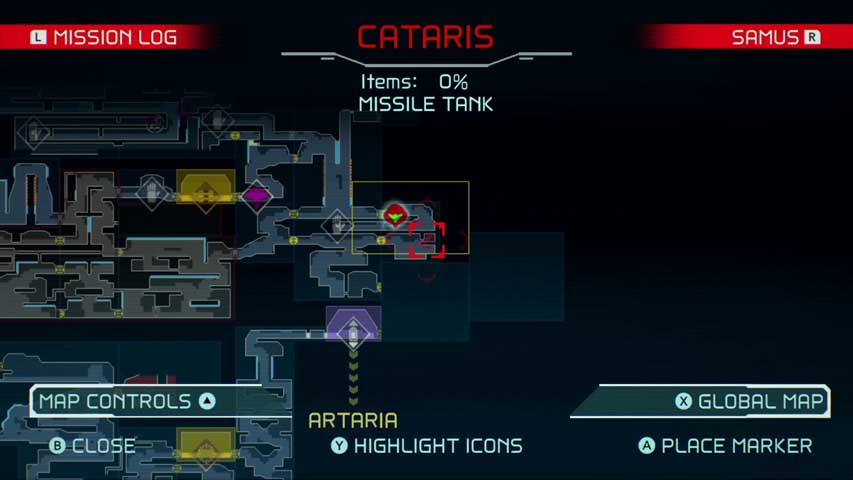
ZDR itself is one of the best environments ever seen in a 2D Metroid game. Following Samus Returns’ lead, levels are incredibly well designed and look absolutely stunning; with little background details that give this world a life of its own. Also returning from MercurySteam’s 3DS remake is the free aiming, as well as the somewhat divisive Melee Counter. If you weren’t keen on this mechanic previously, Dread won’t convince you otherwise; but with the overall quickness of this new adventure’s gameplay in general, the Melee Counter interrupts the combat flow a lot less this time around; and also gives the player more health and missile pickups when an enemy is destroyed this way. Samus has now been granted the ability to slide, which helps to quickly navigate under small gaps and tunnels or even avoid enemy attacks.
But of course, Metroid is defined by the abilities, weapons and tools that are found along the way. Yet, whilst Dread does offer both new and returning items; there is a real evolution in how familiar abilities are doled out, while the new inclusions make for a fresh new Metroid experience. For a start, it’ll be hours before you’ll find some of Samus’ more iconic abilities; when you’d normally expect them to be the first things you obtain. I shan’t detail fully the new abilities as I wouldn’t want to spoil the surprise, but they’re all a lot of fun.
The Aeion bar from Samus Returns is back, but its four associated abilities are completely new. Once again, this yellow bar is depleted once an ability is activated, although the new Phantom Cloak ability will consume Samus’ energy if the Aeion bar is depleted. This useful stealth function can be an absolute godsend when navigating EMMI Zones; sacrificing movement speed and agility for a cloaking device that conceals Samus’ visage and stops movement from making a sound. The Pulse Radar offers a similar function to Samus Return’s Pulse Scan, only it will only reveal destructible walls, not the map – A useful tool if searching the environment with a fine-toothed comb isn’t your thing, and thankfully optional if it is.
Samus Returns suffered from having to rely on the touchscreen for switching beams, something Dread doesn’t have to contend with as the game utilises pretty much every button on the Switch controller. I used a Switch Pro Controller throughout my playthrough and it was comfortable for the most part. One or two of the abilities can be a little fiddly to use, but there’s never a point where you think to yourself that the controls are working against you. Overall the controls feel much more at home here than they did on the smaller Nintendo 3DS handheld, which does make me pine for a port of Samus Returns on the Switch.
Metroid Dread’s map is privy to the biggest facelift of the series so far, filling it with useful changes and new functions; with the player once again able to place 6 coloured markers to note places of interest, which is still useful, but not always necessary as the map will now flash in areas where there are hidden items, and also show you where and what items have been found. Other icons also appear to denote places of interest, and even if interactable items have been used or not. All of these refinements are rather useful, as ZDR is absolutely huge; one of the largest areas in a 2D Metroid game, for sure. If you longed for the scale of exploration last seen in Super Metroid, then ZDR is your utopia – In fact; Metroid Dread does an absolutely monumental job in guiding you through the game, whilst still giving you plenty of paths to explore. Way back in my Super Metroid review, I spoke of the invisible hand that’s cleverly guiding you to where you should go, and Dread is the first game I’ve seen that replicates that expert level design in action. It’s very rare that you’re explicitly told where to go, yet at times you start to pick up on little environmental clues that trigger an instinct; a little nagging voice that says: “Hey, you should totally go this way”, and more often than not – That voice leads you to something awesome.
You’ll be going back and forth to multiple locations on ZDR, each new ability unlocking further paths, as is the Metroid way, but it’s the journey along these paths that proves to be Dread’s magnum opus. Samus Returns brought this wonderful flow to traversal, combat and movement, which this game builds upon. Combined with the much more fluid framerate than was possible on the 3DS, the result is a game that makes even the simple act of running from one end of the map to another, an absolute joy to experience. The juxtaposition between the slower, stealth-based EMMI Zones and the wider world of ZDR deliver this satisfying ebb and flow to Dread’s pace.
Really, the only time when Dread truly grinds to a halt is during its boss fights; as the player encounters some of the toughest battles in the entire series. But they’re not hard, for hard’s sake – They’re clever enough to allow the player to figure out their movements and weak points, with each death providing a valuable lesson. Some of the later bosses are multi-phased affairs that will be a real stumbling block for players, but I never got frustrated by that Game Over screen. Persistence wins over, and eventually, players will have the knowledge and ability to push through every barrier ZDR puts in their way.
It’s also pleasing to say that Dread’s bosses and enemies aren’t retreads of what came before. This game brings reverence to the games of old, sure; but as mentioned earlier, it’s refreshing to play a Metroid game that’s not constantly nudging you and saying “Remember when you saw this bit in Super Metroid?”. Not that Dread doesn’t occasionally slip in the occasional leitmotif here and there, it’s just that when it does – It feels justified; earnt, if you will. Every time it looks back at the Metroid series, it takes several steps forward.
The series has long struggled to straddle the line between explicit narrative and letting the players figure out what’s going on. Truthfully, it’s always rough going trying to please everyone, but I feel Metroid Dread gets that balance pretty spot on. Considering that Dread suggests that this is the conclusion to the series arc; the game is surprisingly light-handed in terms of narrative. Most exposition is delivered through your regular briefings by Adam, but not in the overly laboured fashion of Fusion. Meanwhile, there are a handful of dialogued cutscenes that are handled very well; if you don’t like to hear Samus talk, Dread comes up with a very clever solution to the problem. The narrative never feels forced or does a disservice to the overall gameplay, yet it delivers some of the most planet-shattering revelations the series has seen thus far; events that have the potential to further shape the Metroid series if it is given a chance to do so. If you followed the Metroid games from the start, you will be satisfied with how Dread ties it all together in a very cool and unexpected way.
But that’s not to say that players dipping their toes into the series with Dread will be lost. The game’s intro tells you everything you need to know about Metroids, X parasites and the current status quo within the 5 minutes of starting the game. Granted, there might be some elements that newbies might not wholly understand, but that just gives them a chance to go back and explore further.
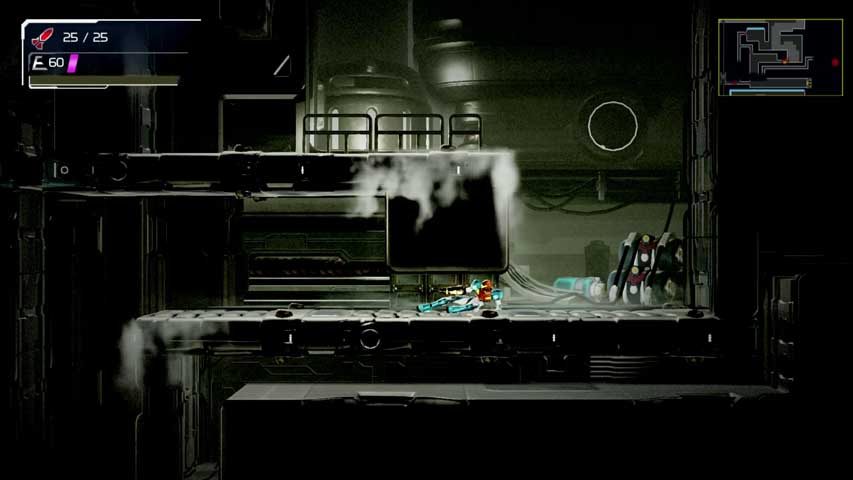
Dread has a superb presentation throughout. As mentioned earlier, ZDR is a great-looking setting, with a lot going on if you’re paying attention. I played the entire game with the Switch docked, and while there were a few instances of performance dips in busier areas, it’s generally a smooth experience, with that fluid 60fps feel. Meanwhile, cutscenes run at around 30fps but are no lesser for it, as the animation and stylish choreography of these mostly action sequences are superb. The sequences triggered during the successful Melee Counter of a boss is a reward in itself, with Samus at her acrobatic best. The Switch might not be a visual powerhouse, but even at 1080p this is a game that looks fantastic, with some great little lighting effects that are the cherry on top. Audio is no slouch either, with an all-new soundtrack of haunting, atmospheric soundscapes that really hit that tension home – Not even a rendition of Super Metroid’s Lower Norfair theme anywhere.
If you’re a little stuck and have some amiibo lying around, you might be able to make things a little easier with Dread’s support for all of the Metroid-related amiibo.
The Super Smash Bros Samus and Metroid Series Samus amiibo can be scanned once a day for a quick energy refill, whilst the Dark Samus, Metroid, Ridley and Zero Suit Samus figures can be scanned once a day for a missile refill.
But the real useful goodies come with the Metroid Dread Samus amiibo and EMMI amiibo, granting you a permanent extra energy tank and a permanent Missile+ Tank respectively. After that, you’ll be able to get a daily life refill by scanning Metroid Dread Samus once a day, or a daily missile refill with EMMI.
While not quite as cool as extra concept art or other bonuses, these are useful additions – But not exactly something I’d buy these amiibo exclusively for. To be honest, for years I’ve always seen amiibo as nice figures – Any other functionality is a bonus.
And without spoiling too much; once you’ve finished the game, much like Samus Returns, you’ll get a few neat unlockables for finishing the game in certain timeframes or reaching item completion targets. Nice little bonuses, but it would have been nice to see something more substantial. However, after reaching the end of the game in just over 5 hours, I already feel compelled to get that 100% completion rate, and even go through the game all over again to better my completion time. It’s that good.
Is it as good or even better than Super Metroid? That’s not a question anyone can really answer right now; time has been extremely kind to the 1994 entry, ageing the game to classic status. To speak as highly of Dread right now might well be a case of hyperbolic jumping the gun. More time is needed to determine if this game has that timeless quality that separates the video gaming medium’s best examples from the rest of the pack.
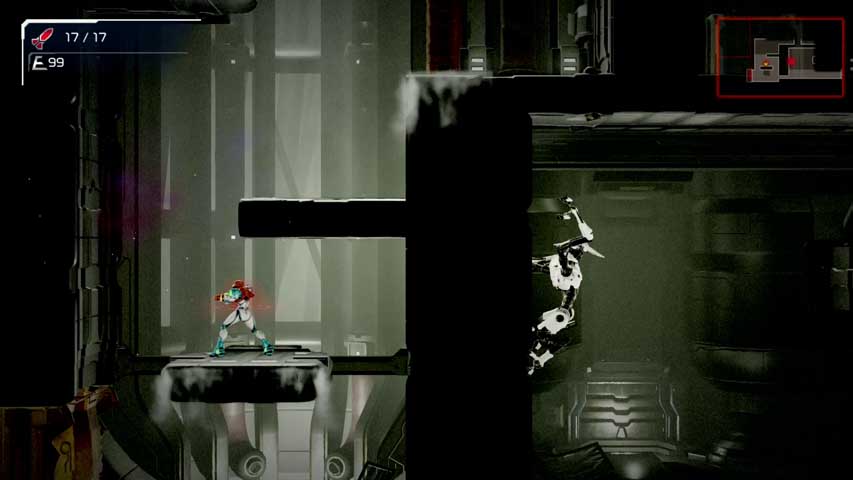
So, let me say this about Metroid Dread. At the very beginning, I spoke of how this game succeeds because it’s not trying to be the next Super Metroid. Yet, ironically it’s because of this, that it is possibly the only game that’s come close. The Metroid style of game has evolved over time, becoming a beloved style of game for developers of a certain age and era. Meanwhile, the Metroid games themselves have rarely evolved as much. It pleases me to say that together, MercurySteam and Nintendo EAD have modernised the series by making bold additions and changes to the age-old formula. These changes might not please everyone, but they certainly pleased me. It’s the best looking, best-playing entry in the series and is an absolute triumph of compelling gameplay and well-thought-out level design.
My only wish is that Nintendo sees how fans like me feel, and keep delivering more Metroid games like this because I want more. Metroid Dread is satisfying in every way, and now I’m off to go and play it all over again. This is the game I’ve waited decades for, and I can’t express how happy I am to see MercurySteam deliver, with Nintendo’s help.
The Road To Metroid Dread might be at its end, but I’m not quite done yet – I’ve played 16 Metroid-related games over the last 6 months, and now it’s time for me to rank them all. Next week, find out where your favourite (or most hated) game ranks in my very own top 16! I’ll see you next week for the grand finale of this series – It’s going to be a blast!
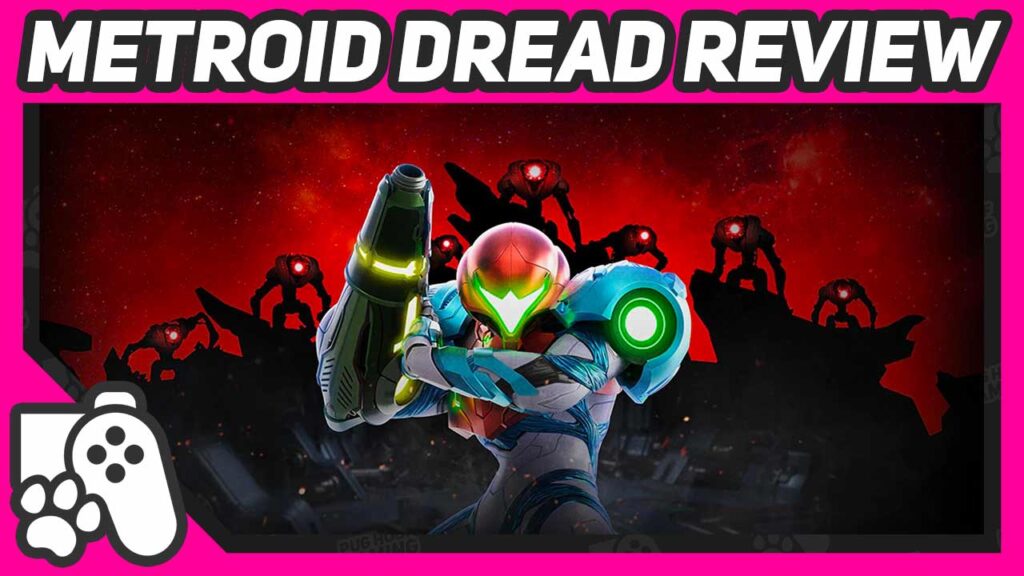

Love the exploration and the feeling of progression amazing it also introduces fear into you a bit when you have to sneak past the Emmis that feeling of something virtually invincible and able to one-shot you makes it more satisfying when you finally beat them. It’s the most fun I’ve had to play a Metroid game in a long time maybe since super Metroid
And I’d have to agree with you 🙂